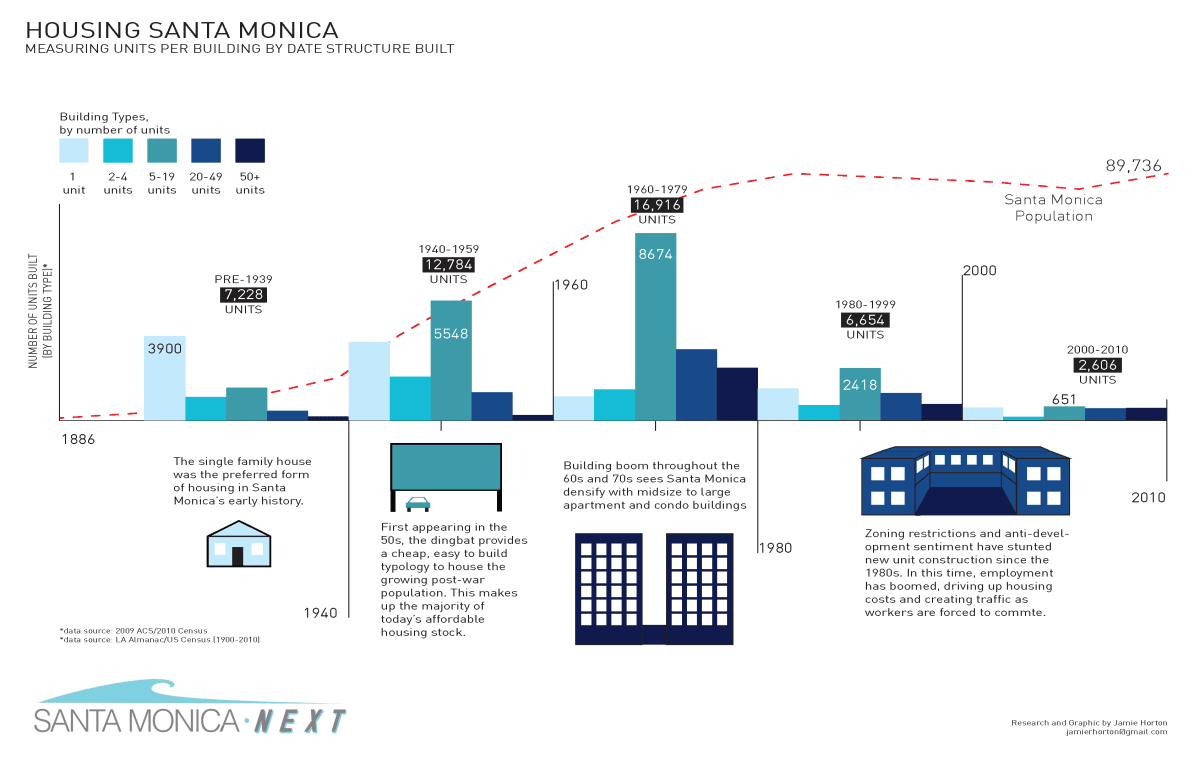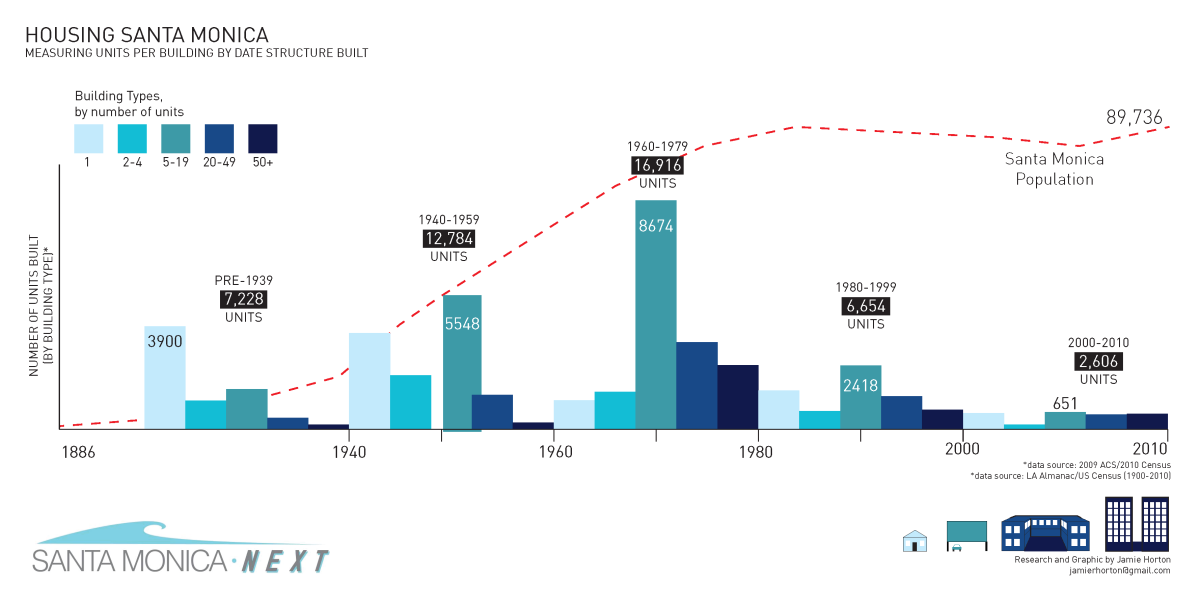
Editor’s note: The above infographic traces the historical trends of housing in Santa Monica. Data are from existing housing stock. As is clear from the graphic, in the last 30 years, relatively little housing has been built due to zoning restrictions and political obstacles. While Santa Monica’s population has remained relatively static over the last several decades, the county population has doubled. The resulting skyrocketing rents and commuter traffic, caused in large part by those who work in Santa Monica but can’t find a place in the city to live, continue to be problems to this day. However, no-growth politics and restrictive zoning haven’t always been the reality in Santa Monica.
Since its founding in 1875, new residents have consistently come to Santa Monica’s shores looking to make homes for themselves. In the first two decades of the 20th century, those homes were largely detached single-family housing. That began to change after World War II when an influx of people returning to civilian life necessitated building more multi-family housing. In the post-war era, the rise of the “dingbat” was an attempt to provide affordable market-rate housing. Dingbats, which are common throughout the Sunbelt, are boxy, two- or three-story apartment houses with overhangs sheltering street-front parking, economically designed and built. Most recently, in 1990, voters approved Prop R, which requires that at least 30 percent of all new housing in Santa Monica be subsidized affordable, either by private developers or by nonprofit housing providers such as Community Corporation of Santa Monica (CCSM). – Jason Islas

